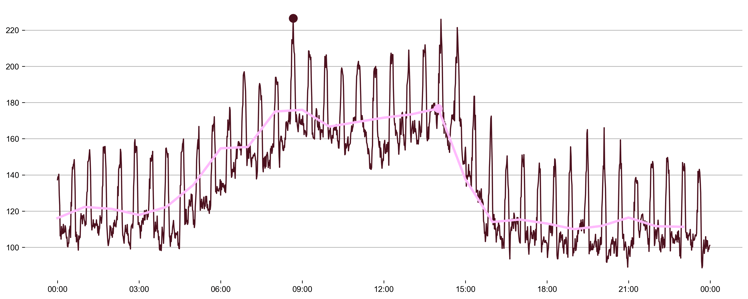The existing energy data on the market tend to fall short in terms of resolution, insight, and reliability.
At Å Insite, we're committed to change that narrative by providing high-quality energy data. But what sets quality data apart, and why is so much of it unreliable?
Your data should provide detailed information
To effectively manage energy consumption, you must pinpoint the driving factors. Most energy data merely provides aggregated consumption for entire buildings, which offers limited insight.
High-quality energy data, however, delves deeper, allowing real-time insights all the way down to the component level. This is where the data truly create value.
Good energy data gives answers to key questions such as:
-
Where and when is the energy consumption the highest?
-
What constitutes the base load?
-
What creates the highest peaks?
-
Which components are the primary energy drivers?
-
Are some components using more energy than expected?
When you have the answers to these questions, you can identify errors and inefficiency, and identify the measures that have the most impact on your energy consumption.
The difference between hour and minutes: In the graph below you see energy consumption throughout one day with different resolution. The pink line is measured every hour, while the red is per minute.

Your data should be correct
If your data shall have any value at all, it has to be correct. Most energy data is full of errors, and to maintain a constant flow of correct data is highly resource-demanding.
Read more: 60% of energy data is incorrect
With high-quality energy data, you should be able to detect and correct errors as they arise, ensuring that the processed data aligns with actual usage - even in cases of raw data gaps.
|
Example
A misconfigured power cable with phases in the order 2-3-1 instead of 1-2-3 will lead to incorrect meter readings.
A simple algorithm can rectify this issue, eliminating the need for costly reinstallation.
|
Your data should be tailored for its purpose
Quality energy data goes beyond resolution and error correction; it must also be customized for its intended use. This means that the data undergoes specific processing and is structured with metadata aligned with its purpose.
In essence, what you see as immediate information should cater to your primary measurement needs.
Some industries require real-time data on individual components for energy-saving measures. For others, distinguishing between different areas of an office building on a monthly basis ensures accurate tenant billing. The two use cases require two completely different data structures.
Read more: How energy data can optimise building operations


